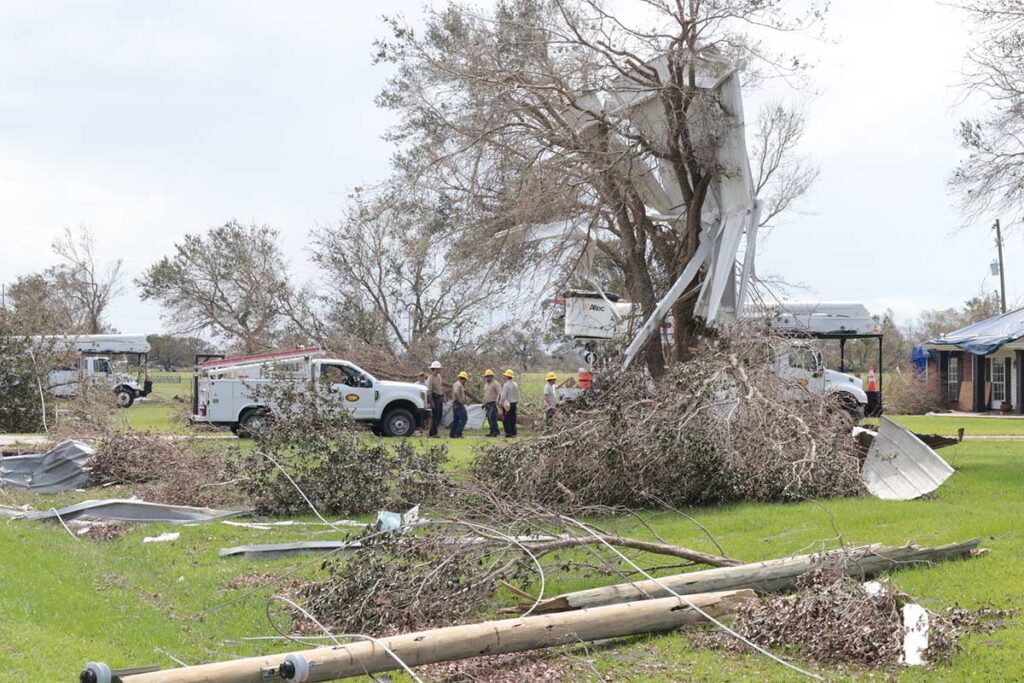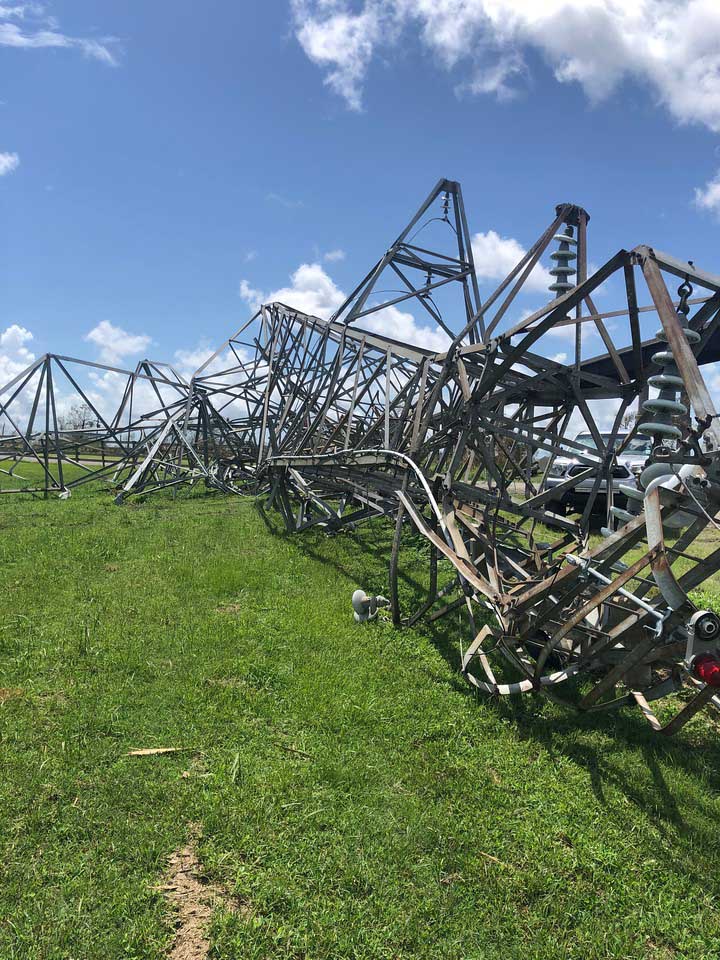
After four major hurricanes in 15 years, Louisiana’s Jeff Davis Electric Cooperative is embarking on a project to relocate and harden some of the most vulnerable segments of its system thanks to a $350 million hazard mitigation grant from the Federal Emergency Management Agency.
“Laura was the worst storm we ever had,” said Mike Heinen, CEO of the Jennings-based distribution co-op, recalling the destruction caused by the Category 4 hurricane’s 150 mph winds in August 2020. “We lost everything, including 105 miles of 69-kilovolt line built on wooden poles and about 50 miles of a 138-kilovolt line built with H structures carrying our lines through marshland.”
Due to the COVID-19 pandemic, restoration work following Laura required a tent city twice the size traditionally needed to accommodate the 800 personnel involved. For more than 16 weeks after the storm made landfall, crews and contractors worked 16-hour days, seven days a week rebuilding the system and getting members and commercial-industrial accounts reconnected. Hurricane Delta disrupted their work when it struck the same area in October 2020.

The co-op spent the past three years working with local and state emergency management personnel to obtain the FEMA hazard mitigation grant. The funding covers about 90% of the costs of major improvements to 105 miles of JDEC’s transmission system and will allow the co-op to raise 10 of its substations at least one foot higher than the region’s 500-year floodplain.
FEMA awards hazard mitigation grants to some communities that are repeatedly impacted by weather events leading to federal disaster declarations. Jurisdictions seeking assistance can include essential infrastructure owners, like co-ops or other utilities, in their funding requests, enabling them to make improvements designed to reduce or avoid future losses.
In its grant application, JDEC cited cumulative costs exceeding $400 million caused by Laura and Delta as well as Hurricanes Rita in 2005 and Ike in 2008.
“Each time we rebuild our system, it’s that much more expensive,” said Heinen. “We’re actually trying to save money by building it stronger and more resilient.”
Once all service was restored in 2020 after Laura and Delta, the co-op still needed LNG-fueled generators to serve coastal areas of its service territory. Oil and gas processing, vital to the regional economy, relies on the co-op for electricity and is expected to need even more power in the future.
“The fuel trucks have been running 24/7 ever since Laura hit, and these projects will take nearly two years to complete, so we’ll have to keep the generators in place to serve C&I customers and provide power to our members,” said Heinen.
With state and federal approvals obtained, rights-of-way access secured and contracts in place to complete the hardening projects, Heinen expects work to get under way in early September. Under terms of the grant, all work must be completed before June 2025.
“We are building a looped 230-kilovolt system with steel poles for hardening and resiliency, and elevated substations to replace everything that was there before Laura hit,” he said. “The LNG plants and their planned expansion represent very large loads, so enhanced reliability and resiliency will improve their service and benefit co-op members in lower Cameron Parish and elsewhere on our system.”
The rebuilt grid is expected to produce wide-ranging benefits from national demand for oil and gas pumped through pipelines connected to facilities in the area, said Heinen.
“We’ll have a robust transmission grid with excess capacity supported by steel structures and elevated substations,” said Heinen. “We anticipate that when another storm or major hurricane comes through, our grid will survive it with minimal damage for the first time ever.”
Derrill Holly is a staff writer for NRECA.